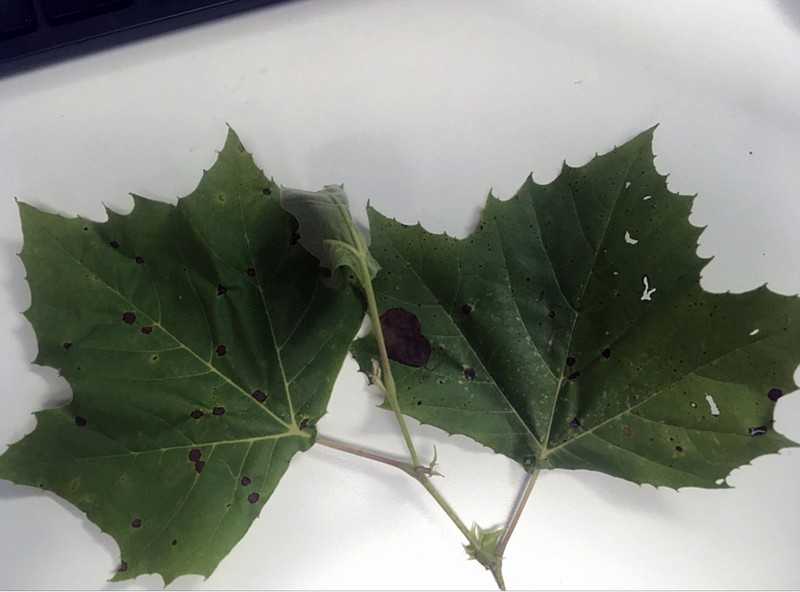Q: What tree are these leaves from? There is one planted at a business and I really like it and would like to plant one.
A: The leaves are a maple, and some might mistake it for being a "sugar or hard" maple, but the pointed lobes match that of Norway maple. It is an excellent shade tree and known for tolerating dry conditions and having good fall color. It is native to Central Europe and some consider it invasive. In a well-maintained landscape it should be fine. Its shallow root system can upheave sidewalks, so plant it some distance from them or driveways. Its dense canopy and shallow root system means grass won't grow well under it, so plan on a large mulch ring around it. Fall is a great time to establish a tree, so consider doing your ground prep work in the next month or so and plant when it cools down, you can almost always plan on that by mid-September.
There are a number of cultivars of Norway maple. Take a photo of the tree and visit a garden center that knows the different trees it sells. Try to find one that matches as best possible. If they don't have any on hand, check into ordering one in.
Q: What are those pretty white flowers in front of your extension center?
A: They are a panicle-type hydrangea, which do well in full sun. Some hydrangeas prefer afternoon shade and others like oak leaf hydrangea are a great choice for shadier sites. Another advantage of panicle hydrangea is they can be pruned and you'll still get flowers on the current year's growth. There are a number of different panicle cultivars, with "Limelight" getting rave reviews.
Q: I would like to seed green beans. Do I still have time? And the area has a lot of foxtail. If it comes after I plant green beans, is there something I can use to kill it?
A: It is ideal to plant green beans before Aug. 10, but I have planted up until Aug. 20 and still gotten a couple of harvests. It just depends how warm the fall is and how early we get a frost in October. The sunnier the location the better, for rapid crop growth. An advantage with fall green beans is the temperature is cooler during flowering so pod set is good, something that was a problem this June and July.
You can use an herbicide labeled as a grass killer, as long as green beans are listed. An example is "Hi-Yield Grass Killer," which requires a minimum time of 15 days after applying to harvesting. The label does recommend the addition of an oil concentrate to improve effectiveness. A typical vegetable cooking oil could be used for this purpose. Be sure to read and follow the label instructions.
Q: I am getting hard white centers in my tomatoes. I keep them watered and they are shaded. What's going on?
A: That condition is described as "white core." It occurs when the fruit is too hot too much when developing. It would even be worse if the fruit were exposed to the sun. I have four different varieties of medium to large tomatoes and all are having some white core as well, and they are deep in the canopy, and I get afternoon shade. So it is just that dang hot! I trim out those pieces when eating the tomatoes fresh. I don't worry about them if I cook with them.
Q: For the first time, I have a mole in my zoysia grass. How can I get rid of it?
A: The thick root mat that develops with zoysia seems to discourage moles, but they can still get established and do damage. You are lucky if you only have one, and getting rid of it should be easy enough. Trapping or using of a bait are equally effective. The ease of a bait like Talpirid is attractive, and the label gives good instructions. Harpoon traps can be challenging to pull back and set, but there is an alternative scissors trap ("Easy Set" Mole Eliminator) to consider. Locating an active tunnel is necessary for effective baiting or trapping. This is explained with a mole bait label, or see this article for details: ipm.missouri.edu/MEG/archive/2012/v18n3.pdf.

